Reading bobcat prints and scat is a lot easier than you think.
Related: The best time to hunt bobcats.
Related: Three vital tips for hunting bobcats.
Related: One bobcat calling tip that beats a bobcat’s camouflage.
What does a bobcat print look like?
You may already be standing over a track in the snow and wondering, Is this a bobcat print or a canine track?
Your first clue is claw marks. All canine tracks will have claw marks. However, bobcat prints will not because they keep their claws retracted while moving.
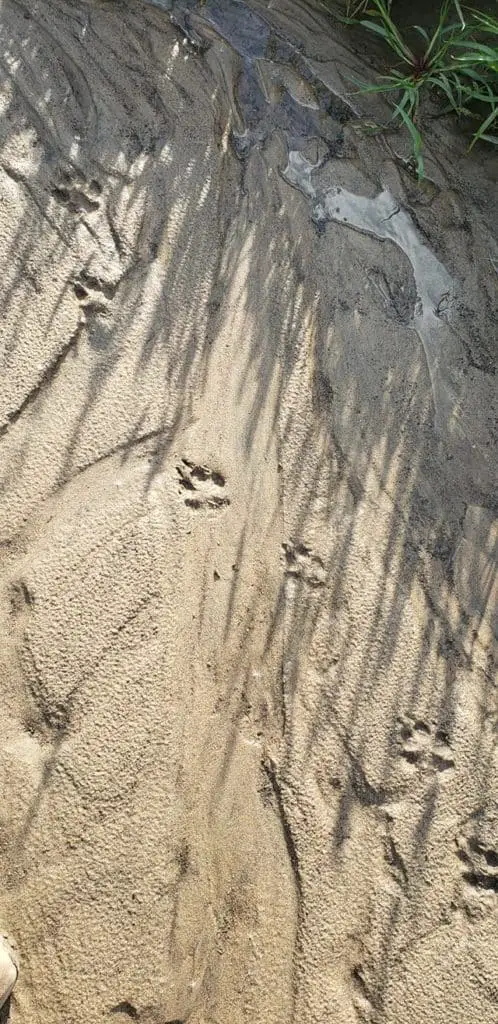
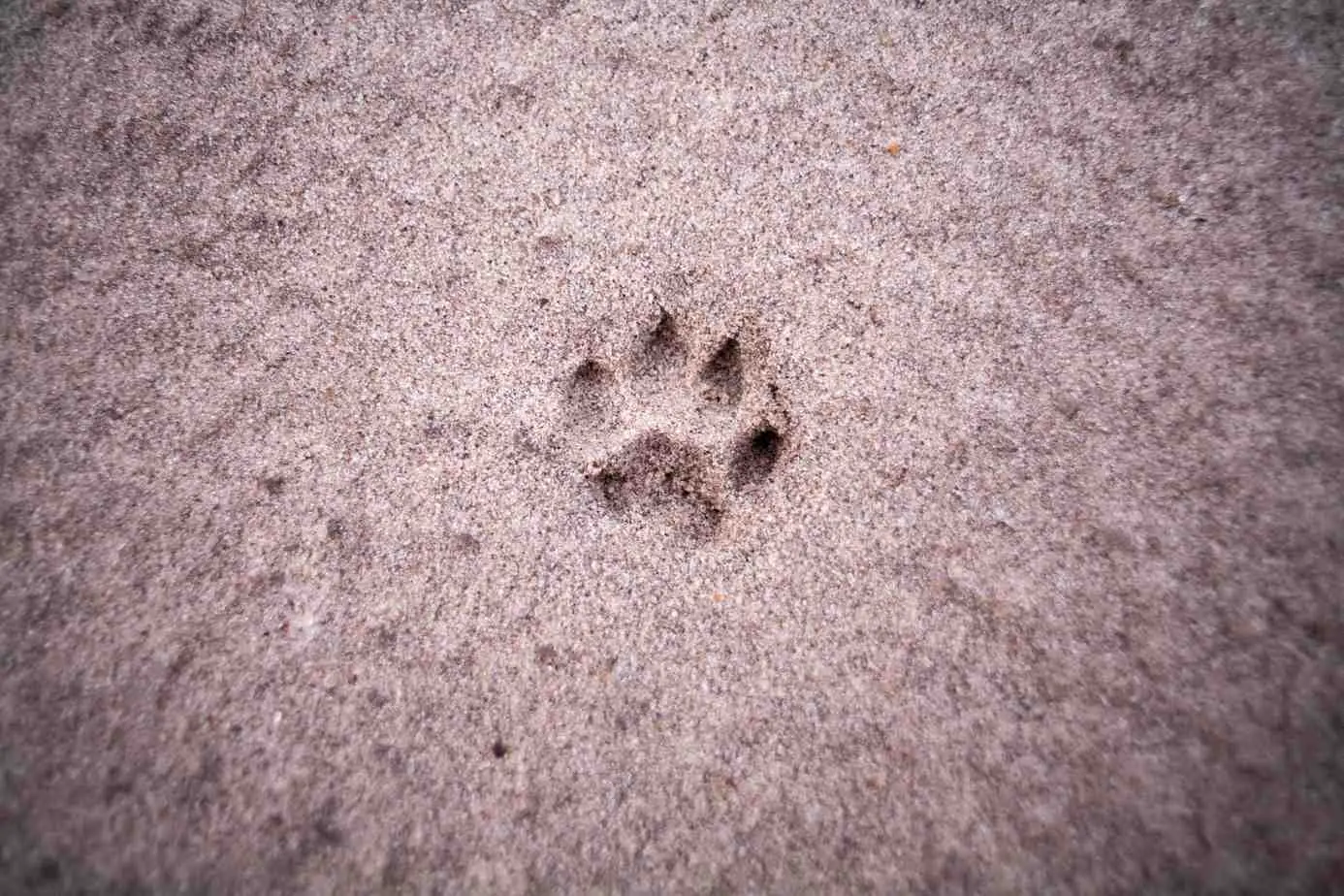
The second hint is the shape of the overall print. Canine prints are taller than they are wide, but bobcat prints are wider than they are tall.
The third tip is the C shape found in the negative space between the toe and heel pads.
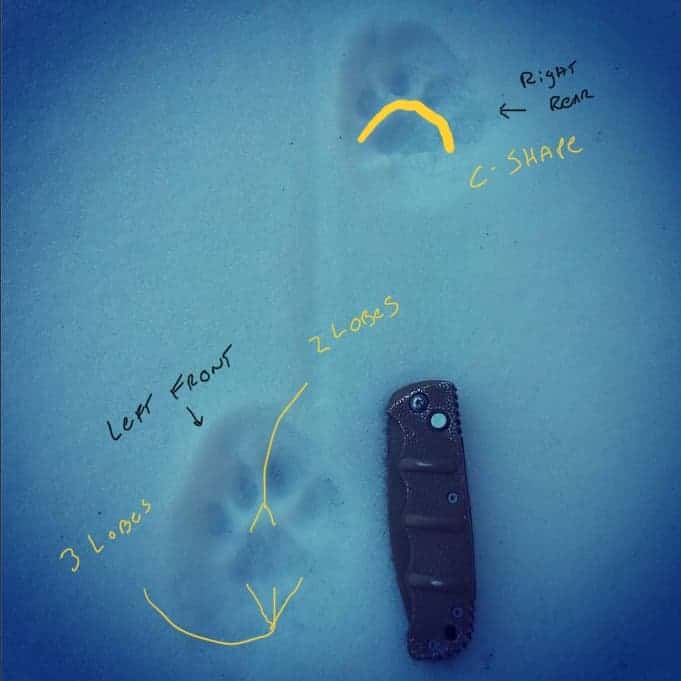
The final clue is the shape of the heel pad. Canines have one lobe on the front of the heel pad and two on the rear. A bobcat’s heel pad has two lobes on the front and three on the rear.
Related: Coyote scat and coyote paw prints
Is it a bobcat’s print or a house cat’s?
On average, a bobcat’s prints are twice the size of a house cat’s or feral cat’s prints.
Reading a bobcat’s mind from just a trail of bobcat prints.
Was the bobcat walking, trotting, loping, or galloping? What is the difference between these four gaits?
The most relaxed gait (the pace or manner of walking) of a bobcat is called “the walking gait.” The walking gait typically results in only one foot every being off the ground at any one time.
When walking, the bobcat’s legs move forward in an alternating, diagonal string of right front leg followed by the left hind leg, the left front leg, and the right back leg.
Like all predators, the rear paw is slightly smaller than the front.
A walking bobcat is calm but constantly examining the area around itself. Bobcats walk around dens, when in areas providing good visibility and long-range scents, when accompanied by other group members (female with kittens), and when they are well fed and not engaged in hunting.
Walking patterns found in bobcat prints.
There are three unique walking gaits.
Understep Walk: The understep walk is when the hind paw lands behind the front foot on the same side. The two most common reasons for a bobcat using the understep walk are moving slowly and stalking a target.
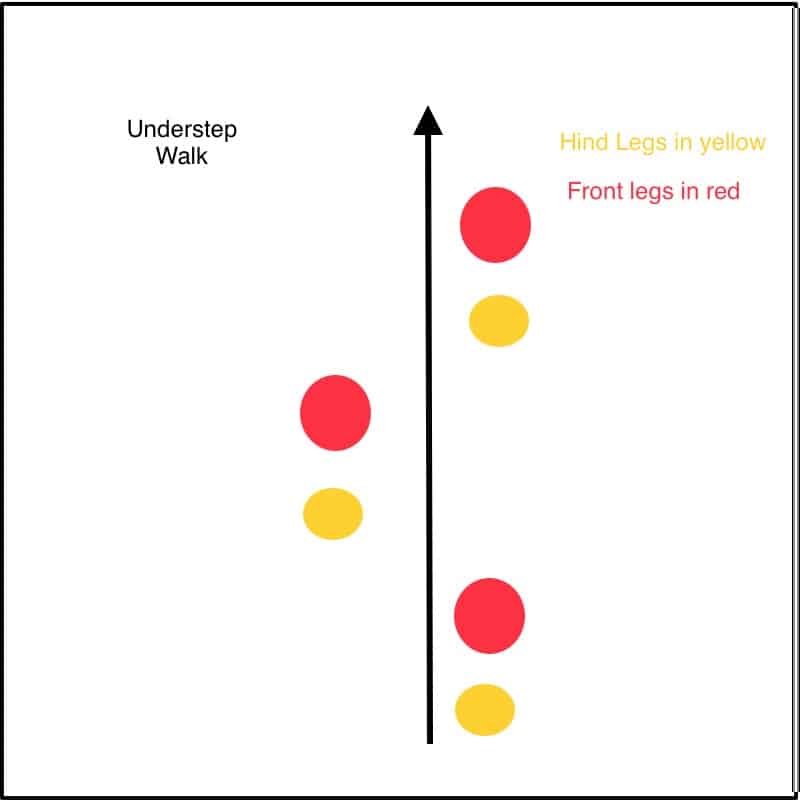
Overstep Walk: The overstep walk occurs when the hind paw lands ahead of the front foot on the same side. The overstep walk is used for slightly faster speeds when traveling on firm, stable ground.
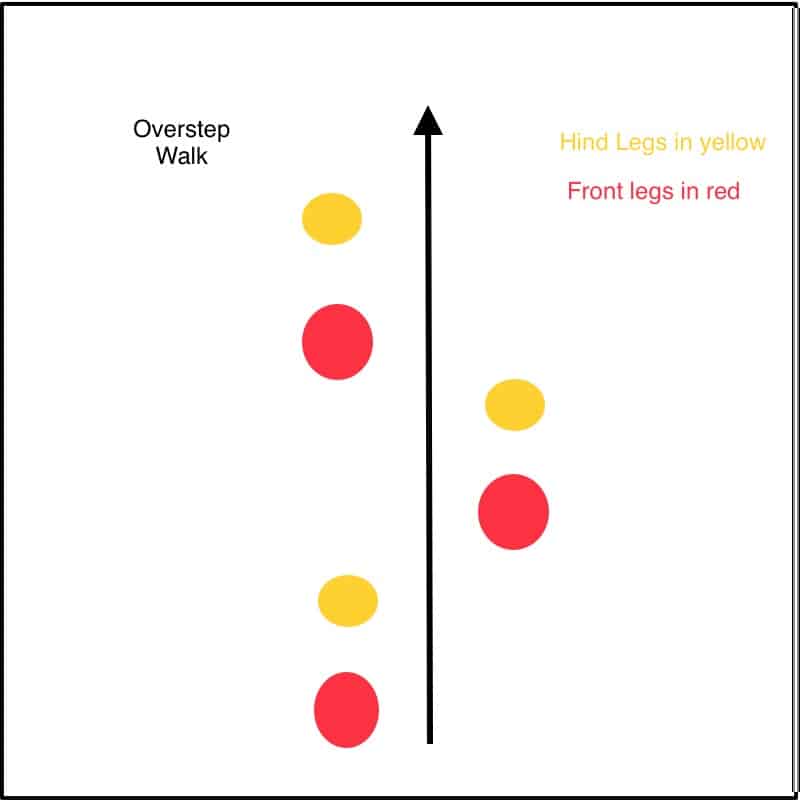
Direct Register Walk: Anytime the hind paw steps into the space just occupied by the front paw on the same side; this is called a direct register.
The direct register walk is seen chiefly in “safe” areas (places well known to the predator) and where there are topographical problems. It permits the surest of footing and prevents tripping into holes or over other obstructions.
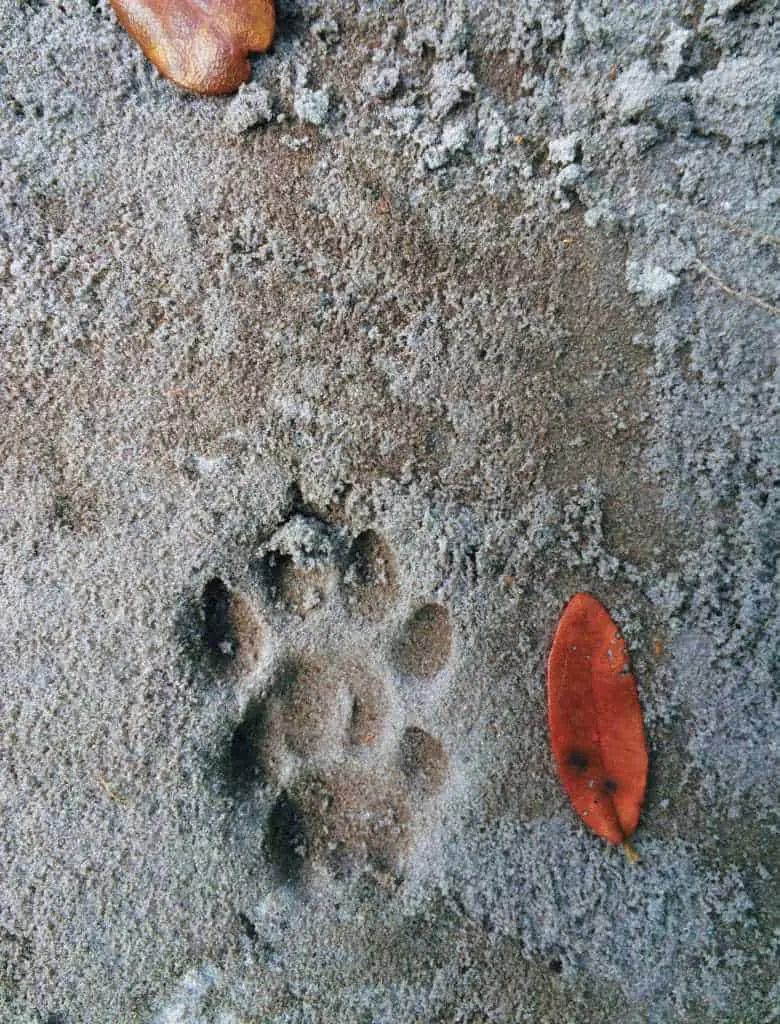
Trotting patterns found in bobcat prints.
Trotting is faster than walking, but it requires little effort, covers more ground in a shorter time, and is maintainable for long stretches at a time. When trotting, the legs move forward in diagonal, alternating pairs, which typically results in two feet being off the ground at any one time.
Direct register trot: When a bobcat is patrolling or hunting inside its territory, the direct register trot is its usual gait.
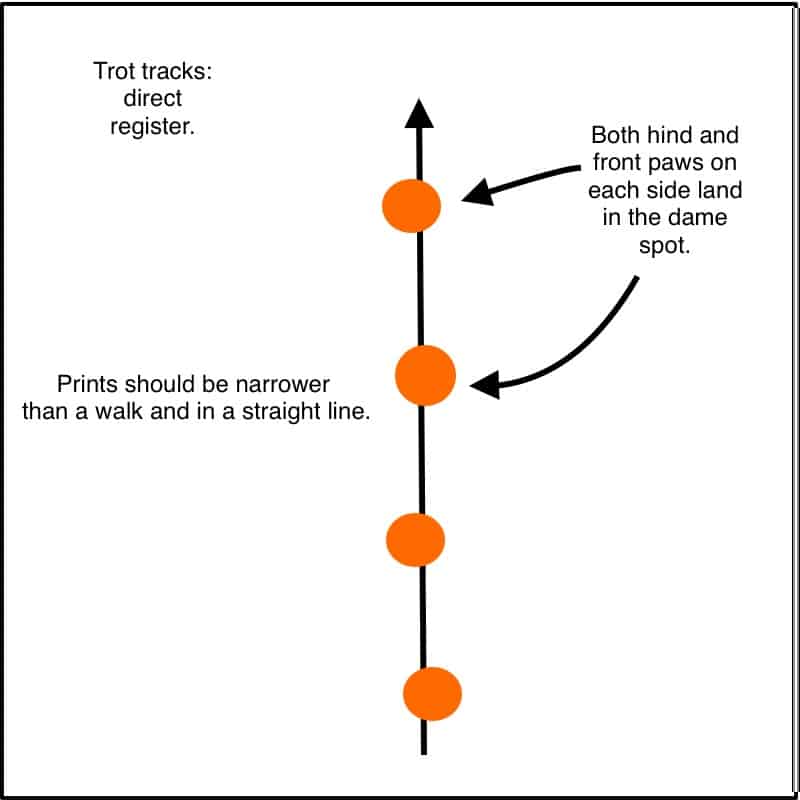
Loping: Loping is the first stage of running. A loping bobcat typically has only one foot on the ground at any one time. Bobcats will also lope while hunting smaller prey hiding in taller grasses and low thick brush.
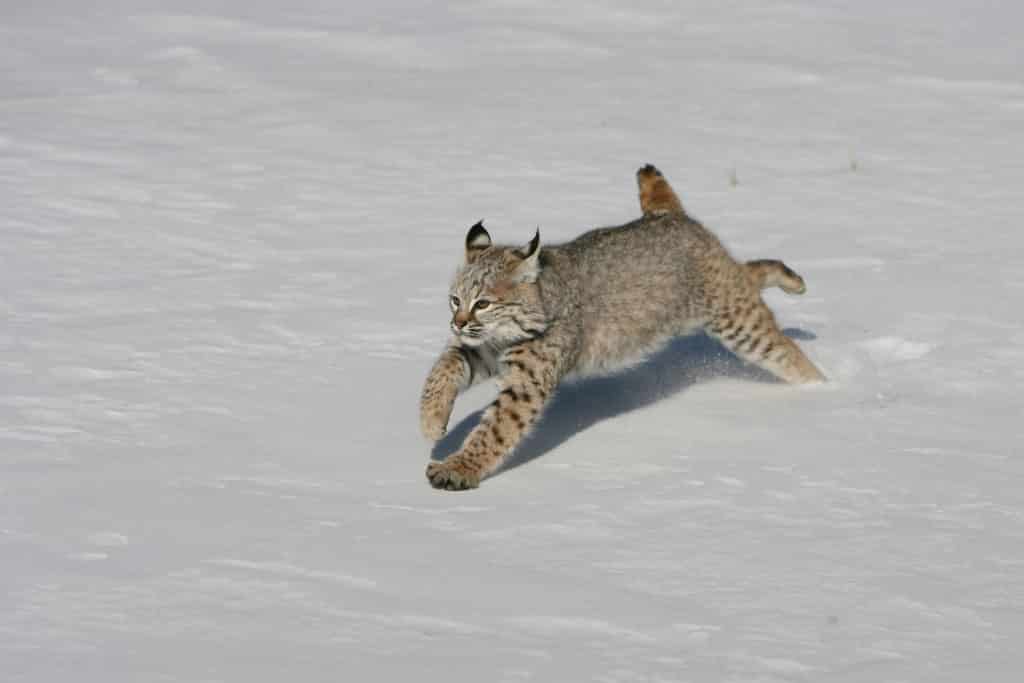
Galloping: Bobcats gallop for two reasons, to escape and to pursue prey. An escape using a gallop will be a straight line. However, twists and turns will mark a pursuit using a gallop as the bobcat reacts to its prey’s attempts to flee.
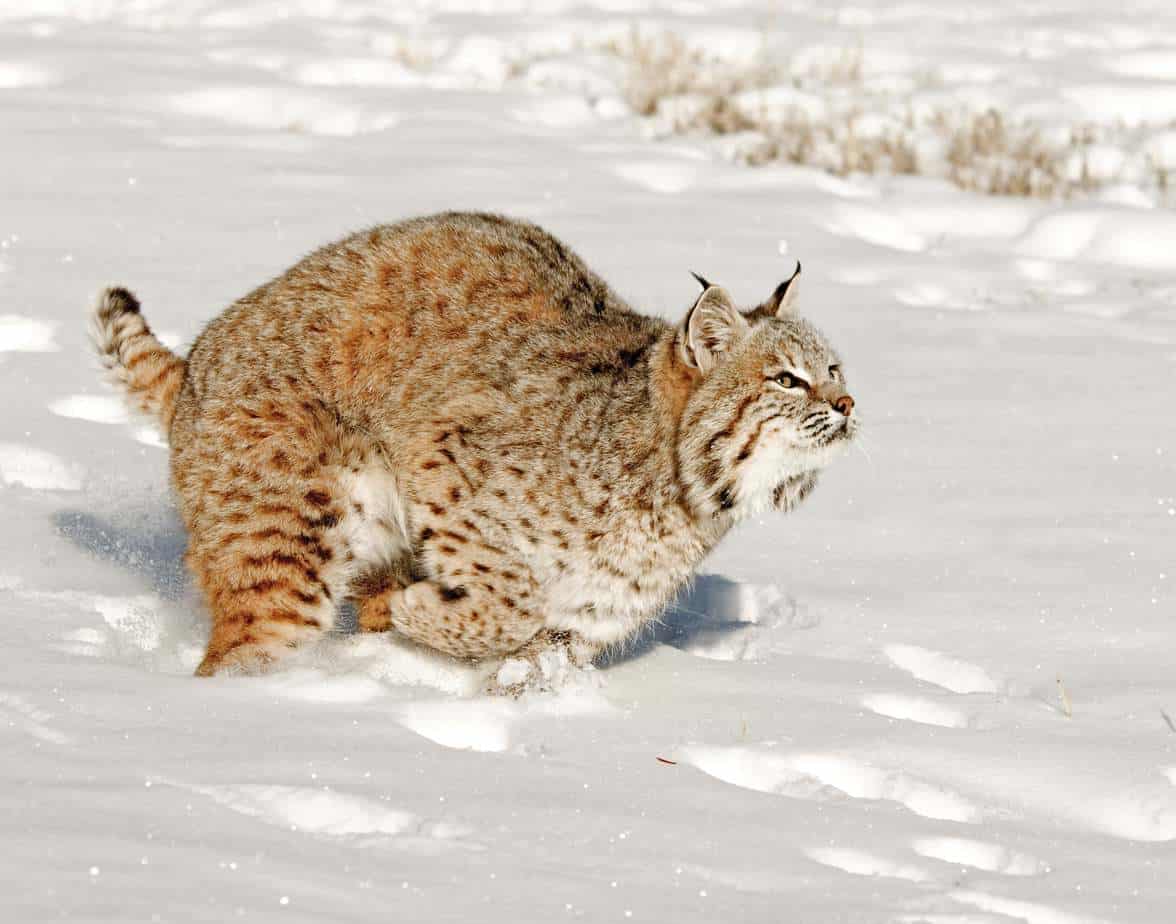
Aging bobcat prints
When it comes to aging those bobcat tracks you found, the weather in the days leading to your discovery is critical. While mud holds tracks the longest, snow is a frequent weather event during most regular bobcat hunting seasons and often provides the best track aging information.
There are two degrees of freshness for bobcat hunters when using aging tracks: Tracks more than a day old and 0-3 hours old tracks.
Tracks older than one day provide you with proof that a bobcat inhabits the land. For most hunters, this is enough to scout out the area for an excellent calling stand location and return later to hunt the spot.
0-3 hour old tracks mean anything from perhaps still within calling range to you spooked them coming in (check the sign for galloping gait evidence).
Aging bobcat prints in the snow.
It’s all about the recent weather. Tracks in snow start sharp and clean. Then, as the temperatures rise, those sharp edges round off. Finally, as temperatures dip below freezing, ice crystals develop inside the track.
Tracks in deep snow are harder to age than those in light snow. With deep snow, you’ll have to examine the kicked-out (excavated) snow to determine its age. Excavated snow is exposed to the elements, especially melting.
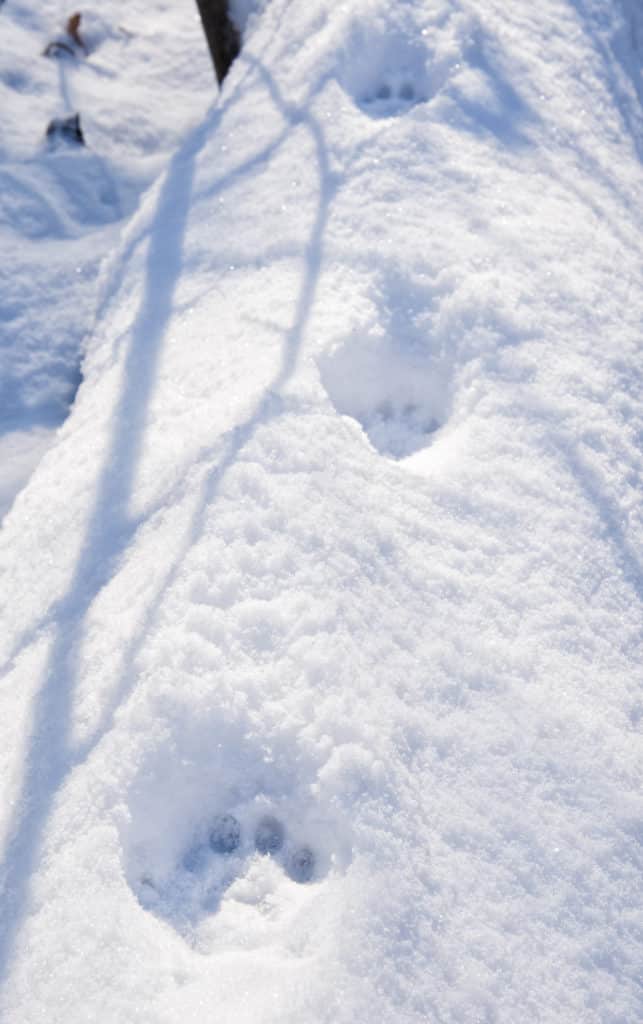
You know they were made after the last snowfall if good clear tracks in the snow have no snow in them.
Has any snow built up inside the track if the wind blows hard enough to move the snow on the ground?
If you find the track has an icy surface in the morning, then the print froze at some point overnight.
If you find clean, fresh tracks in the morning, check for ice crystals. No ice crystals mean it’s from that morning.
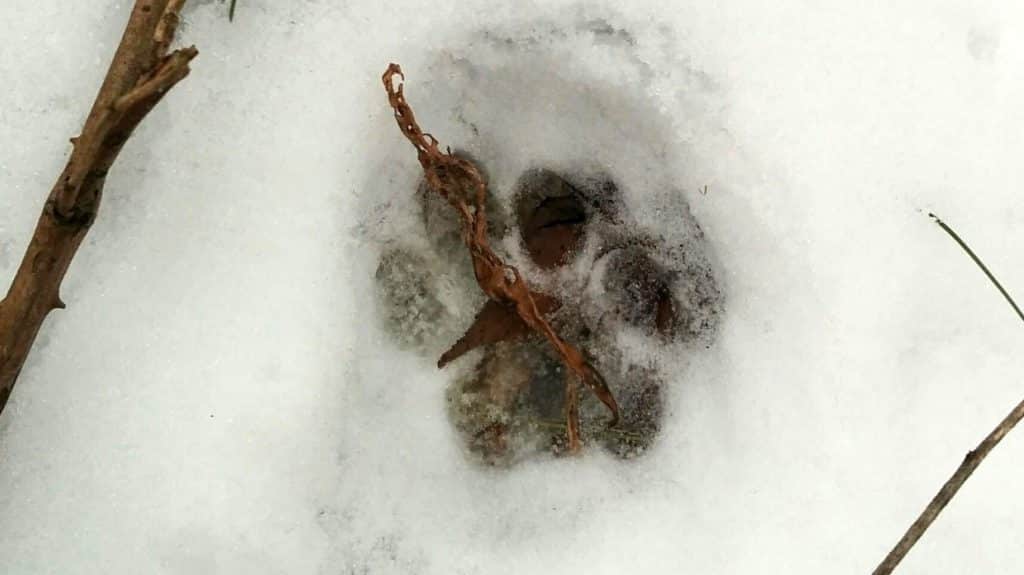
If you find a fresh sharp track when the temps are above freezing or the sun is shining, and the sky is clear, that track is new and hot.
Aging bobcat prints in the mud
With mud, knowledge of recent weather still plays a critical role, but now we can add gravity to the list of things that aid you to track.
If a bobcat fled minutes before you arrived and left tracks in the mud, here’s what you’ll find.
Along the outside of the print, there will be fissured walls and bits of soil. Gravity will soon pull these materials down into the track. If none have yet to fall, the print is exceptionally fresh.
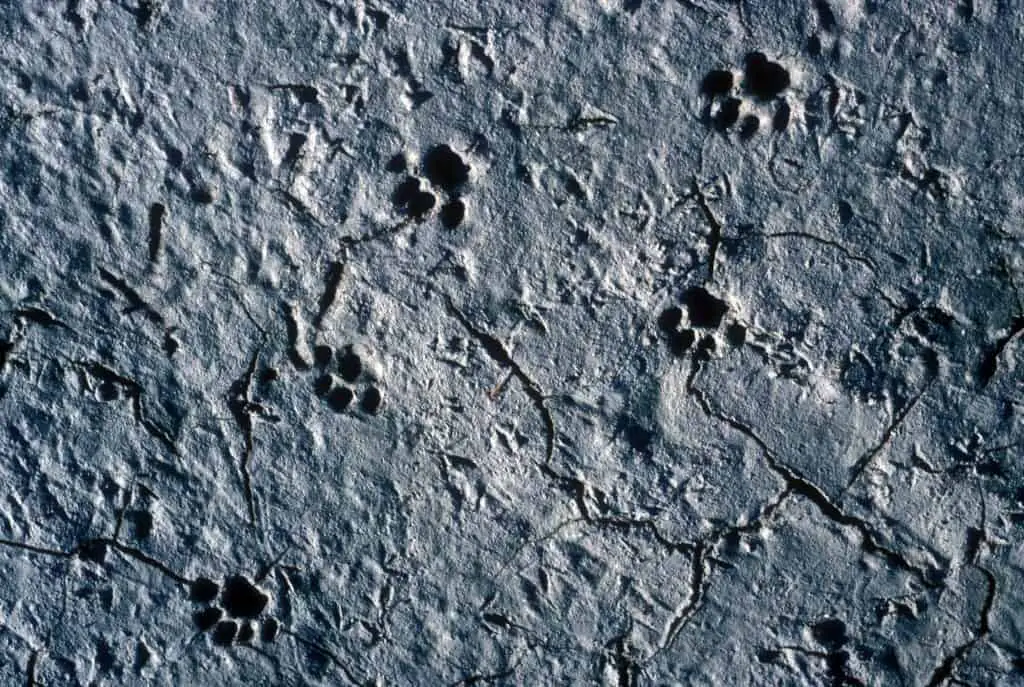
As that track ages, the first changes occur in the color of the cracks and fragments displaced by the bobcat’s paws. These slivers and the edges of the track will dry out faster than the print itself.
As time progresses, the track’s sharpness will dull, and its edges will round as gravity takes hold.
Eventually, debris will fall into the print, the rain will collect in it, and heavier rain will wash it away. Knowing what day it rained or when the wind would have been blowing strong enough to move debris into it will help you determine the track’s age.
Aging bobcat prints in sandy and dry soil.
The freshest tracks in the sand will have raised surfaces near the crests of their walls that have not yet had time to begin to dry out. If you find a track in this condition on windy or sunny days, it’s 0-3 hours old.
A track found in the early morning that has no dew in it is from that morning. If it has dew in it, it’s from some point before sunrise.
If the track appears fresh and dry, but it recently rained, it’s from after the rain ceased.
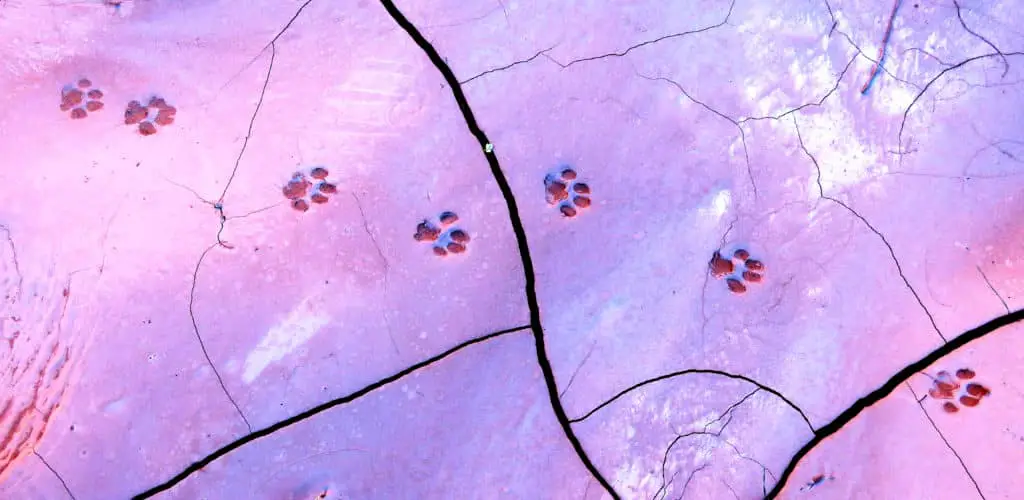
Bobcat scat.
Bobcat scat looks a lot like poop from a small dog at first. Averaging 4 inches in length and 1/2 inch diameter, it is colored brown or black and split into ends that are blunt on one end and sometimes tapered on the other. Bobcat scat may contain some bones and fur of smaller ungulates prey.
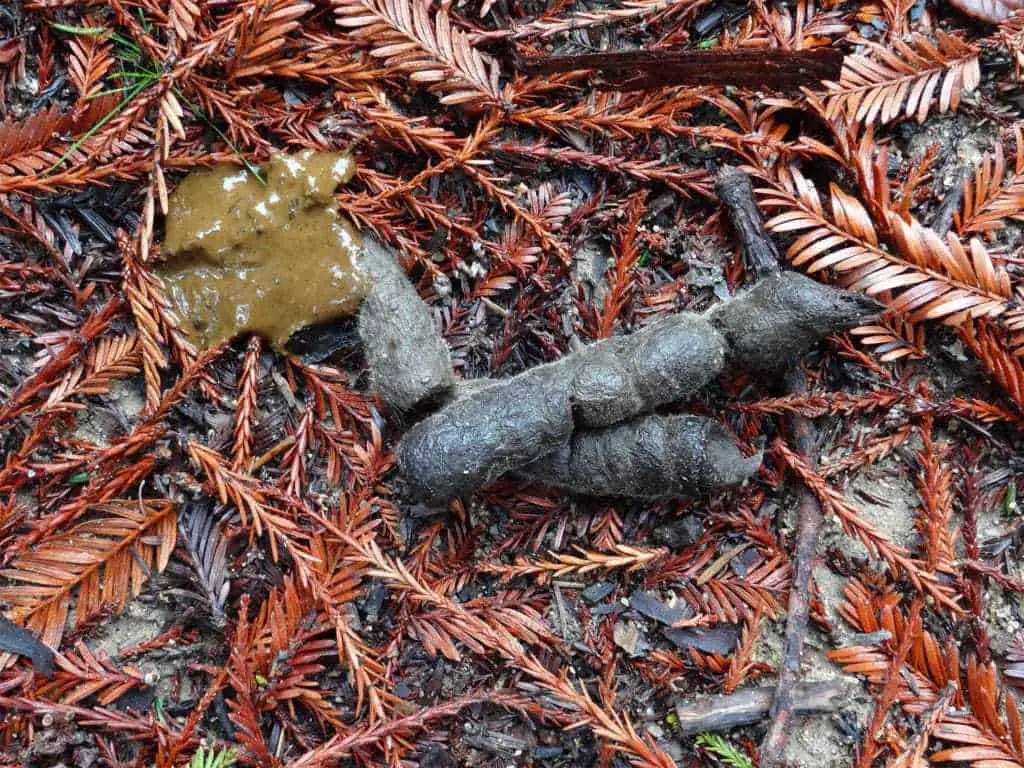
Bobcats often attempt to hide their dung by covering it. Before defecating, they will scratch an area bare to defecate in, and then after pooping, kick sand over it.
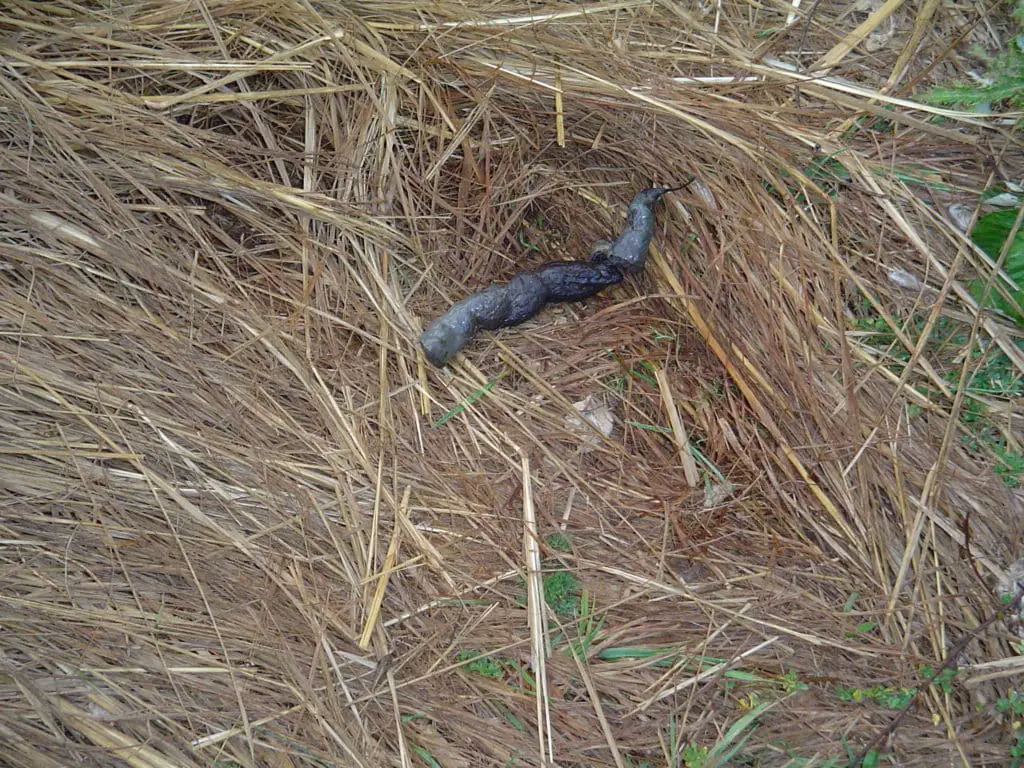
Male bobcats, however, like to mark trail intersections as territorial boundaries by defecating at the intersection and then scraping and urinating on the spot.
Bobcat scat with a urinated on scrape has a distinct “house cat” like odor.
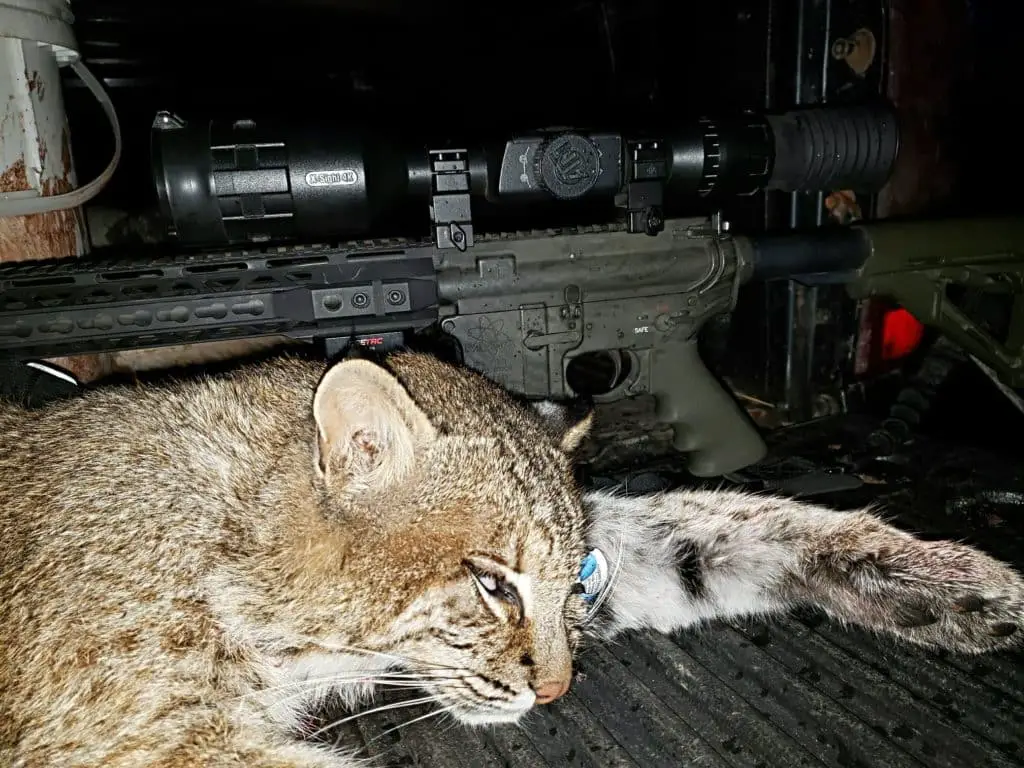
The ATN 4K Pro, the most affordable and dependable night vision scope I ever purchased.
Please note: If you use a link I provide to make a purchase, I receive a commission (at no extra charge to you). Thanks for supporting the website!
When you get good at reading bobcat prints and scat…
You’ll be able to track and hunt one of the most sought-after predator hunting prizes. And perhaps even help paid wildlife experts gather research information. https://wildlife.org/how-do-you-study-elusive-bobcats-ask-hunters/.

